Lighting up the dark with the Westcott Icelight
As photographers, we like talking about light: look for the light; find the light; use the light!
It’s all well and good when you’re shooting where there is enough ambient light to make an exposure, and you’re doubly lucky if the light comes from the right direction. But this isn’t often the case — wedding photographers know that they could be asked to shoot the bride’s preparation in a room with terrible downlights (panda eyes anyone?), or if you’ve been asked to shoot a table setting at a cafe or reception dinner and there is hardly any light available save fairy lights strung across the ceiling and flickering candles in lotus-shaped, stained glass holders (illuminated place settings and decor, while beautiful, do not provide enough ambient light).
Before you throw your arms up in despair and decide to move full time into studio-based photography, have a look at the Westcott Icelight.
This is a portable hand-held continuous light source that looks like the love child of a lightsaber and the common household fluorescent tube! It measures about 20 inches (52cms) long and has a diameter of about 1.75″ (4.5cm). While it won’t hold a candle against Mace Windu’s lightsaber (for one thing, it’s not purple), it’s still a pretty impressive bit of tech that will have people wondering what it is that you’re wielding (kids may even come up and embark on a mock lightsaber battle with you).

Here are the techy bits about the Icelight (you know you’re just dying to find out):
- Fully dimmable 1160 lumens LED, rated to 50,000 hours before you need to get a replacement.
- Frosted diffusion front with a 72o beam angle.
- Light is daylight balanced (5200K – 5400K)
- Equivalent to 150 watts (compared with a quartz halogen).
- 60 minutes battery life on full power.
- Flicker free.
- Internal battery, chargeable – 2.5 hours recharge.
- Has dual accessory attachments at both ends: you can attach gels to it!
- Can be mounted on a stand.
I took the Icelight out for a couple of test drive sessions (thanks to a loan from Team Digital). In the first instance, I had Bunbury photographer extraordinaire, Graeme Marsh, front up to the camera (don’t worry, there’s a more attractive model in the second test drive session. Just put up with Graeme’s rugged “good looks” for now). We shot at Fremantle Harbour late in the night and used to Icelight to create some dramatic lighting.
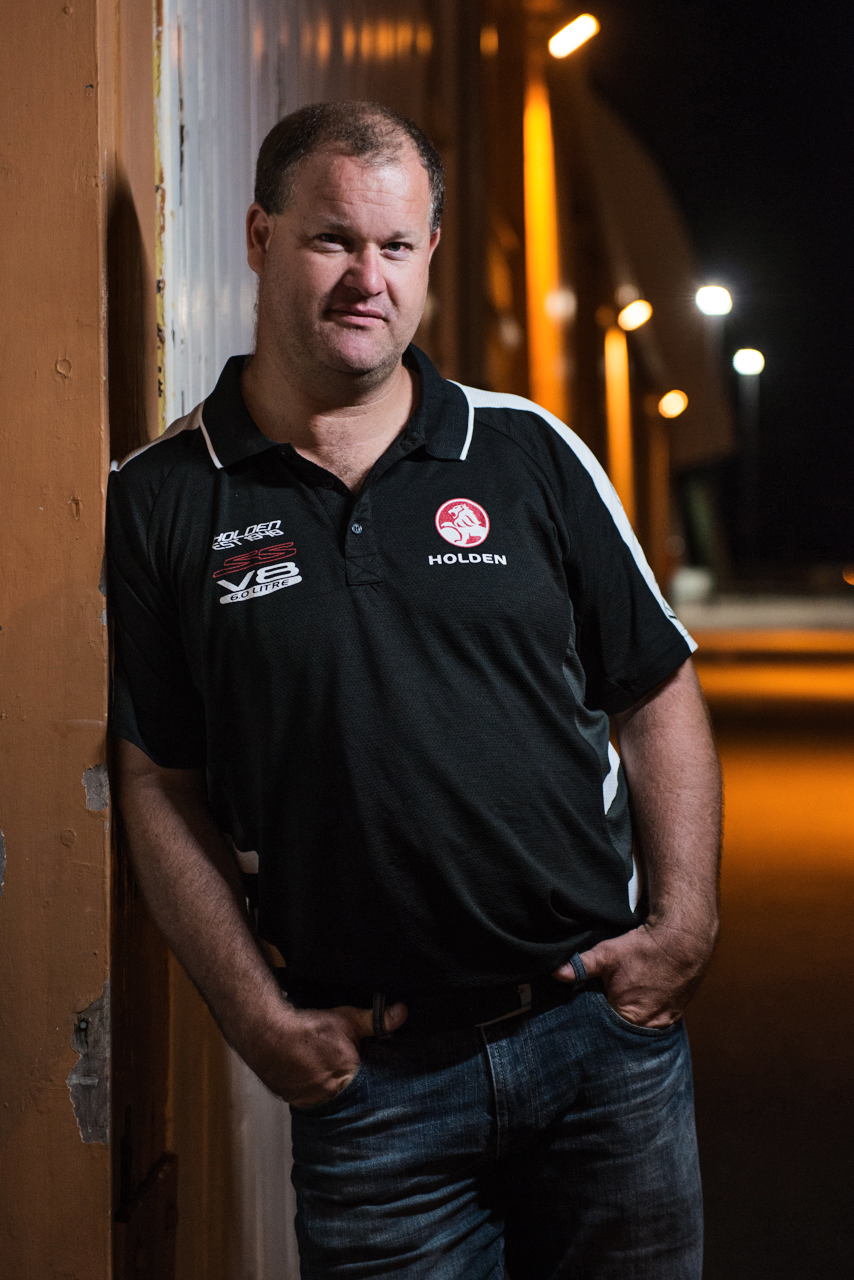
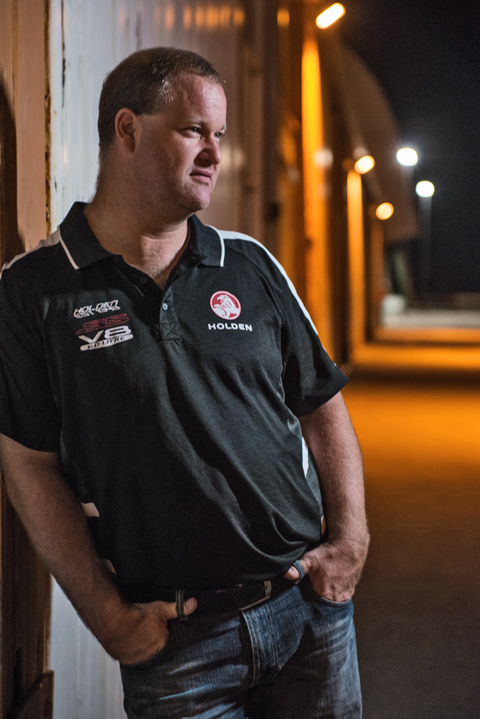
These were taken at around ISO1600, f3.2, 1/80, with the Icelight held about 2-3 metres to the right of camera axis. No stands or additional rigging was used – just another mate holding the Icelight to my right and slightly above Graeme’s noggin. These shots were taken quickly and easily and demonstrates the way the portability of the Icelight (it even fit in my camera bag).
The second test session allowed me to test the Icelight in more variable lighting. With a mate acting as a voice-activated Icelight holder and his daughter as model in tow, we shot inside Whaler’s Tunnel at the Round House in Fremantle, then down at South Mole and then back again to the Harbour.
Lighting in the tunnel was awful. I locked exposure for the tunnel interior and allowed for some of the backlight from the end of the tunnel. This still meant that Caitlyn, our fair model, would be pretty awfully lit by the yellow bulbs set in the tunnel. Bring in the Icelight and suddenly we have directional lighting! Even better still, the 720 coverage afforded by the Icelight meant that we could feather the light, ensuring that we had Caitlyn mostly covered by the light. The shot below was taken at ISO320, f4.5, 1/30.
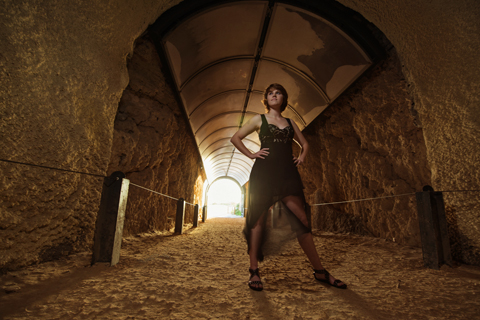
We arrived at the next location, South Mole, while there was still light in the sky and, having only shot with the Icelight in fairly dark locations, I wanted to see how it would perform at the golden hour and into sunset. Would it be able to light Caitlyn up while I was still able to retain some ambient background exposure?
I set Caitlyn in the shade on the steps of the lighthouse and set exposure for the backlight. Then, with the Icelight positioned high and to the side, I grabbed a couple of frames. The verdict: even at full power, the Icelight isn’t strong enough to provide key lighting with backlight. If you’re looking at doing something like this, use an off-camera flash with a diffuser (umbrella or softbox).
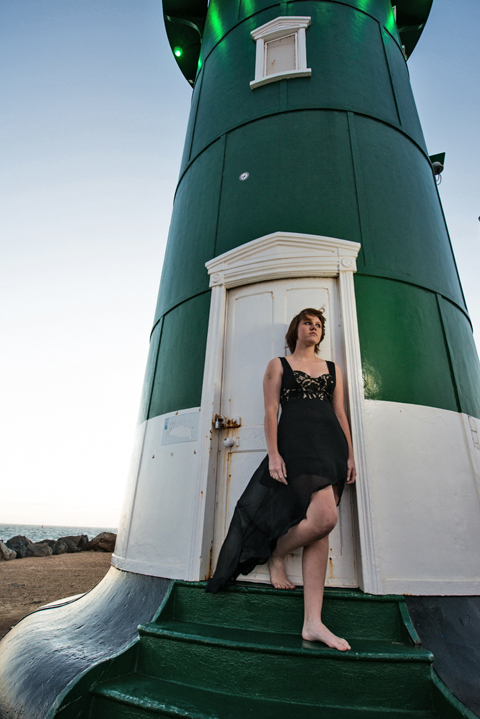
However, as the light in the sky dropped, the Icelight came to the fore. The difference between the above frame and the one below is about 20 minutes. Note the ambient light still visible on the building in the background (right of frame).
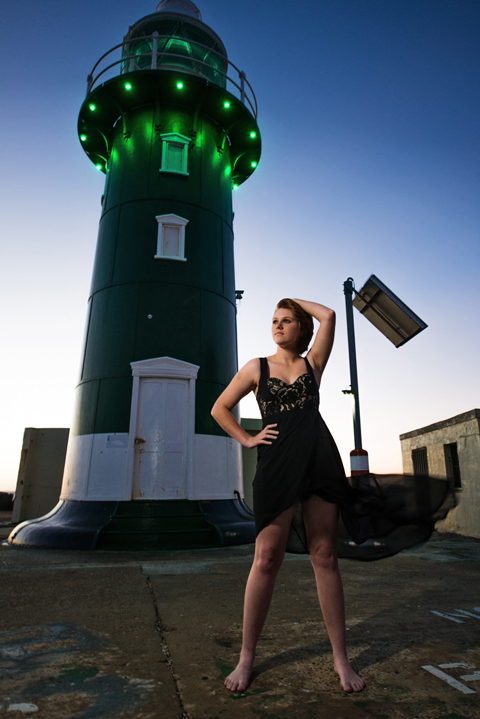
After sunset, we headed to Fremantle Harbour and shot with the Icelight in its element – as key light balanced against artificial ambient light. Because the Icelight acts like strip lighting, it can be used to create feathered lighting for very creative lighting effects. Have a look at the range of lighting we achieved at the harbour – from traditional portrait lighting to more dramatic Rembrandt and then rim lighting.

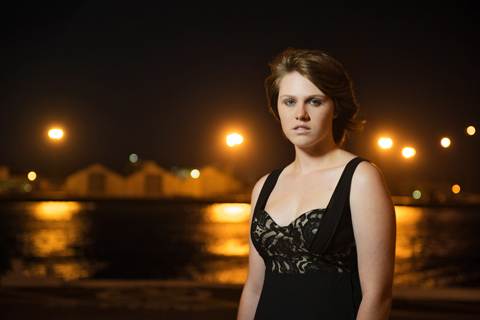
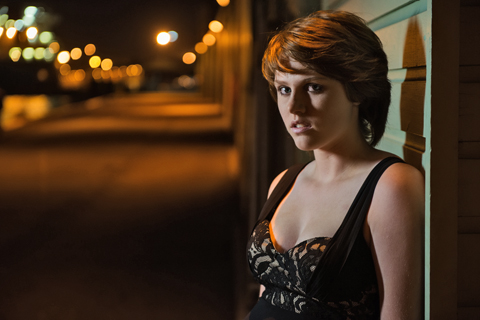
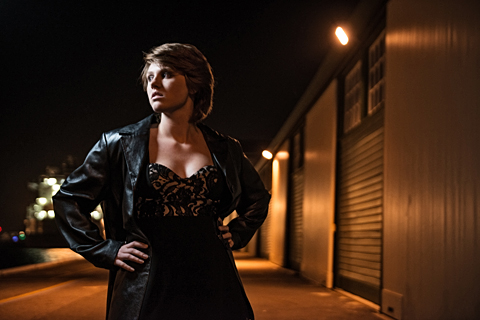
And, finally, we couldn’t wrap up the shoot without taking a shot of Caitlyn lighting herself with the Icelight!
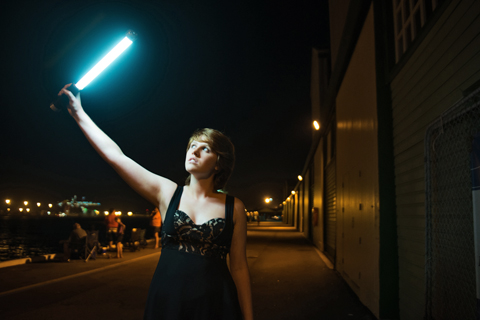
THE VERDICT
Since testing the Icelight, I’ve chatted with a number of local photographers and while a number are enthusiastic about the opportunities and scope that the Icelight offers, I’ve also noted a level of cynicism directed at the Icelight — notably in relation to the price ($585) for what is essentially a set of LED lights. Sure, if you have the know how and the gear, you could create your own battery-operated portable lighting kit with LEDs. But what the Icelight offers is very portable portable lighting. Remember: this is a LED light in the shape of a tube that could essentially fit into your knapsack. It’s very light, can be operated with one hand (or attached to a stand) and packs quite a bit of power (I’d recommend having the light around 2-4 metres from the subject, depending on power and exposure settings).
As for the price: it’s essentially what one would pay for a professional level speedlight (eg. Nikon SB910 or Canon 600EX), and we don’t often think twice about investing in a speedlight when we require one. Certainly, the Icelight has a more limited range of use than the speedlight, but where it comes to the fore is in difficult lighting situations where a speedlight would be too powerful or result in too much light spill.
The Icelight would be useful if you’re a wedding photographer or work a great deal on location and have very little control over onsite ambient light. Having something like the Icelight can lead to less stressful and more creative shooting in challenging lighting. It offers an alternative to the use of video light (and similar) as constant light in a package that is, well, really cool, but also eminently portable.

Jayanta Ray
07/02/2013 at 12:24 pmExcellent article, never knew of it before